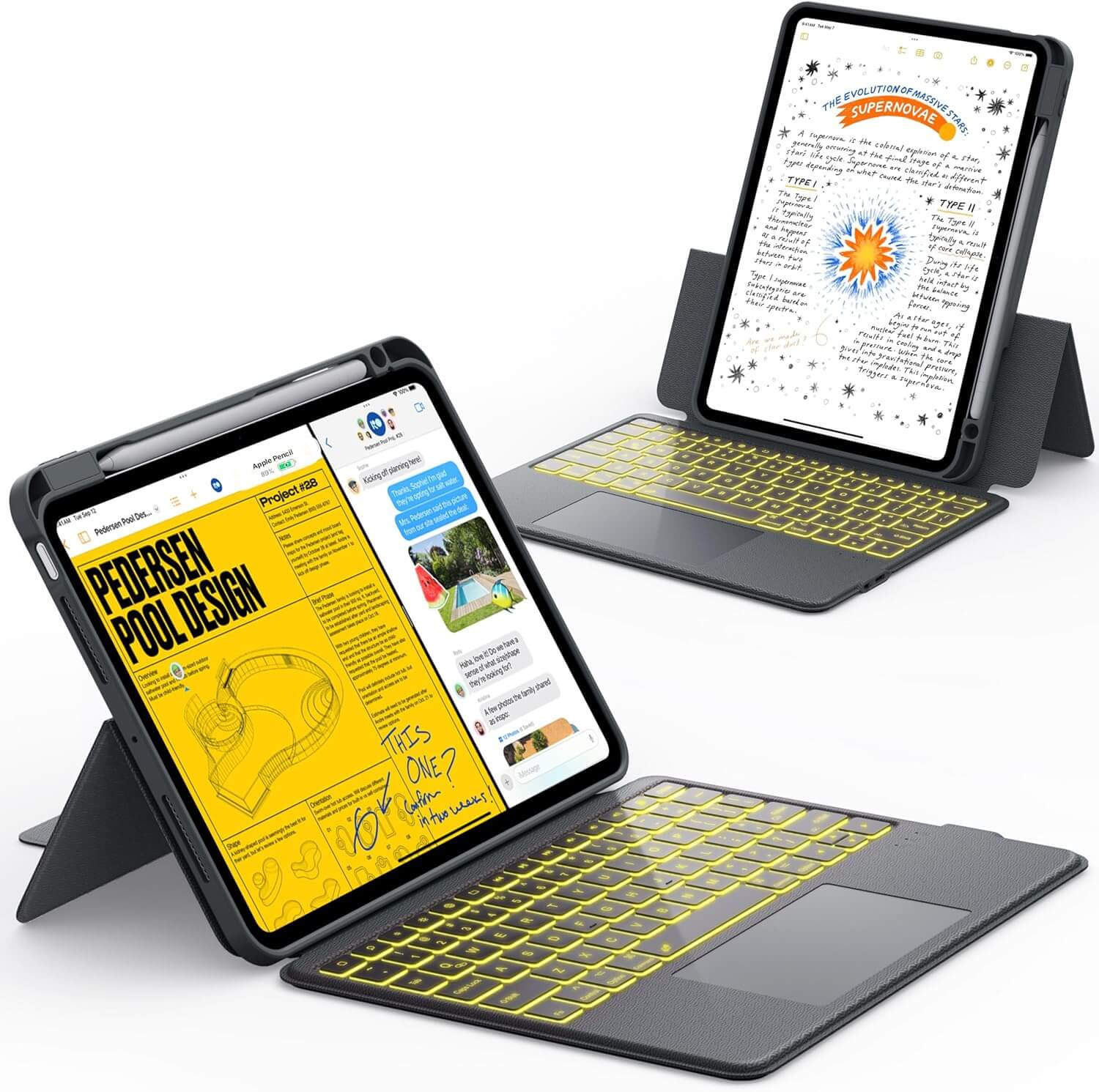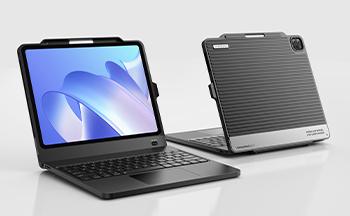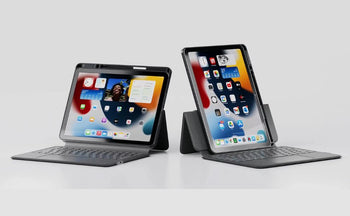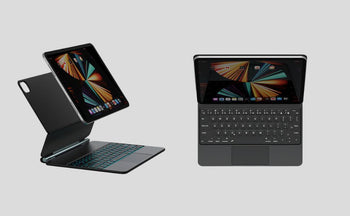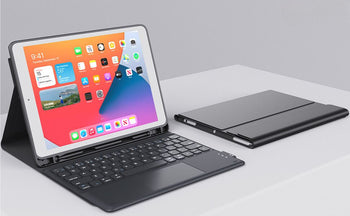Choosing between the iPad 10 and iPad 11 can be a bit tricky. With both models offering different features and specs, it’s important to understand what each one brings to the table. In this guide, we’ll break down the key differences, so you can make the best choice for your needs. Whether you’re a casual user or someone who needs a device for work or school, we’ve got you covered. Let’s dive into how to choose iPad that fits your lifestyle and budget.
Key Takeaways
- The iPad 11 has a faster A16 chip compared to the A14 in the iPad 10.
- Consider how you plan to use the iPad—casual browsing or more demanding tasks.
- Think about your budget; the iPad 11 offers more features for a similar price.
- Storage options vary between models—choose based on how much you need.
- Check accessory compatibility, especially if you plan to use a keyboard or stylus.
Understanding The Key Differences
Okay, so you're trying to figure out what's really different between the iPad 10 and the iPad 11? Let's break it down. It's not just about a number; there are some key areas where these iPads diverge. We'll look at performance, design, and display.
Performance Upgrades
The iPad 11 generally boasts a more powerful chip than the iPad 10. This translates to faster app loading times, smoother multitasking, and better overall responsiveness. Think of it like this: the iPad 10 is a reliable car, while the iPad 11 is a sports car. Both will get you there, but one will do it with a lot more zip. The A16 chip in the iPad 11 is more efficient, which helps with battery life too.
Design Changes
One of the first things you might notice is the design. The iPad 11 often features a more modern aesthetic, sometimes with slimmer bezels or a different camera placement. The button placement might be different too. These changes aren't always huge, but they can affect how the device feels in your hand and how it looks. The materials used might also differ, with the iPad 11 potentially using higher-grade aluminum or a more scratch-resistant screen. The iPad 10 vs. iPad 11 have subtle but noticeable design differences.
Display Features
The display is where things can get interesting. While both iPads likely have great screens, the iPad 11 might offer features like a higher refresh rate (ProMotion), which makes scrolling and animations look incredibly smooth. It might also have better color accuracy or higher peak brightness. This is especially important if you're doing any kind of creative work where color fidelity is key. The 11th gen does 4K at 60Hz, while the 10th gen can only do 4K under 30Hz.
Choosing between the iPad 10 and iPad 11 really comes down to what you value most. If you need the best possible performance and display, the iPad 11 is the way to go. But if you're on a tighter budget and don't need all the bells and whistles, the iPad 10 is still a very capable device.
Evaluating Your Usage Needs

Choosing between the iPad 10 and iPad 11 isn't just about specs; it's about how you plan to use the device. Are you a casual user, a student, or a professional? Your answer will heavily influence which iPad is the better fit.
Casual Use vs. Professional Tasks
For basic tasks like browsing, email, and social media, both iPads will perform admirably. However, if you're planning on using your iPad for more demanding tasks like video editing, graphic design, or coding, the iPad 11's more powerful processor will provide a smoother, more efficient experience. The new iPad is great for everyday tasks.
Gaming and Media Consumption
Both iPads offer excellent displays and audio, making them great for watching movies and TV shows. If you're a gamer, the iPad 11's better graphics performance will result in higher frame rates and more detailed visuals. Consider the type of games you play; graphically intensive games will benefit more from the iPad 11's capabilities.
Educational Purposes
For students, both iPads are viable options. The iPad 10 is perfectly adequate for note-taking, reading, and research. However, if your coursework involves graphic design, video editing, or other resource-intensive tasks, the iPad 11 might be a better choice. Also, think about accessory compatibility, like the Apple Pencil, which can be a game-changer for students.
Ultimately, the best iPad for you depends on your individual needs and how you plan to use the device. Consider what tasks are most important to you and choose the iPad that best meets those needs.
Considering Budget Constraints
Price Comparison
Okay, let's talk money. The iPad 10 and iPad 11 have different price points, and it's a big factor for most people. The iPad 10 is generally the more affordable option, which makes it attractive if you're trying to save some cash. The iPad 11, being newer, usually comes with a higher price tag. It's worth checking current prices from various retailers, as they can fluctuate, especially around holidays.
Value for Money
Now, it's not just about the initial cost. You need to think about what you're getting for your money. The iPad 10 might be cheaper, but does the iPad 11 offer features that are worth the extra investment? Consider things like performance, display quality, and future-proofing. If you plan to use the iPad for demanding tasks or want it to last for many years, the iPad 11 might actually be the better value in the long run.
Long-Term Investment
Think of your iPad as a long-term investment. A cheaper iPad might seem great now, but will it still meet your needs in a few years? Will it get software updates? Will it be powerful enough to run the apps you'll want to use? Sometimes, spending a bit more upfront can save you money in the long run by avoiding the need to upgrade sooner. The 11th-gen iPad is designed to cater to various user needs, so it might be a better choice for future-proofing.
It's easy to get caught up in the initial price, but really think about how you'll be using the iPad and how long you expect to keep it. A little extra research can help you make a smart choice that you won't regret later.
Assessing Storage Options
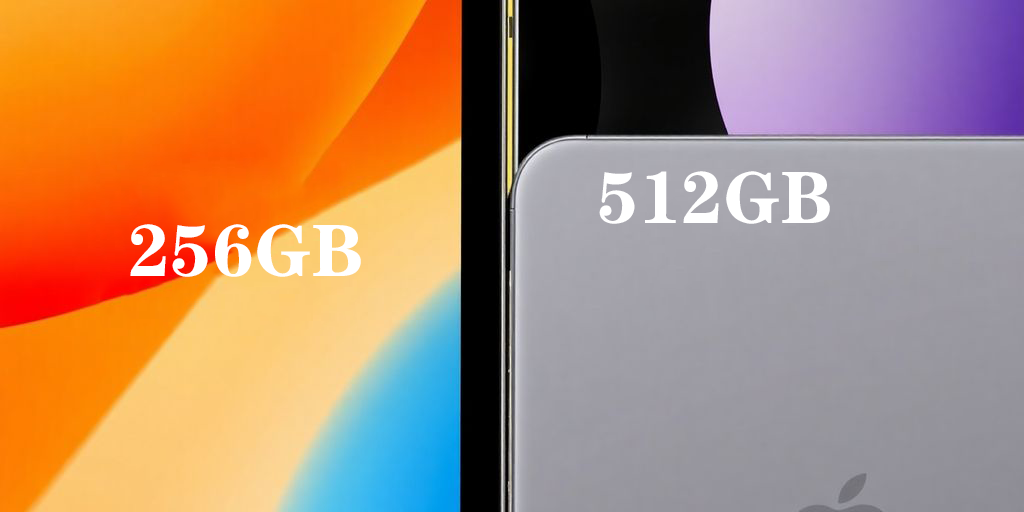
Choosing the right storage size for your iPad can be tricky. It really depends on what you plan to do with it. Do you just want to browse the web and check email, or are you planning on editing videos and storing tons of photos? Let's break down the key things to think about.
Storage Capacity Differences
Okay, so the iPad 10 and iPad 11 come in different storage options. The base models usually start at 64GB, which might be okay for very light users. But honestly, these days, that fills up fast. Then you usually have options like 256GB, 512GB, and even 1TB or 2TB on the higher-end models. It's important to check the iPad 11 and iPad 10 specs to see exactly what's available for each. Think about how much space your photos, videos, apps, and files take up on your current devices. That'll give you a good starting point.
Impact on Performance
Here's something a lot of people don't realize: storage can affect performance. When your iPad's storage is almost full, it can slow things down. The operating system needs space to work, and if it's constantly struggling to find room, you'll notice lag and sluggishness. It's like trying to work in a cluttered room – you can still do it, but it's way harder. So, even if you don't think you need a ton of storage right now, consider getting a bit more than you think you'll use to keep your iPad running smoothly.
Future-Proofing Your Device
Think long-term. How long do you plan to keep your iPad? A year? Five years? Apps are getting bigger, photos are higher resolution, and video is becoming more common. What seems like enough storage today might not be enough in a year or two. It's often worth spending a little extra upfront to get more storage and avoid having to replace your iPad sooner than you'd like. Future-proofing your device is a smart move.
Getting more storage than you think you need is almost always a good idea. You can't upgrade the storage later, so it's a one-time decision that you'll have to live with for the life of the device. It's better to have too much storage than not enough.
Exploring Accessory Compatibility
Choosing between the iPad 10 and iPad 11 isn't just about the tablets themselves; it's also about the ecosystem of accessories that can seriously boost your experience. Let's break down what you need to know.
Keyboard and Stylus Support
Accessory support is where things get interesting. The iPad 10 supports the first-generation Apple Pencil, which, let's be honest, has a slightly clunky charging method (Lightning). You'll need an adapter to charge it with the iPad 10. The iPad 11, on the other hand, plays nicely with the Apple Pencil (USB-C), which attaches magnetically and charges via USB-C. This makes the newer Pencil a more streamlined option.
For keyboards, the iPad 10 works with the Magic Keyboard Folio, while the iPad 11 is compatible with the same Magic Keyboard Folio. So, if you're planning on doing a lot of typing, both iPads have a solid keyboard option, but the experience might feel a bit different due to the design and feel of each keyboard.
Case and Cover Options
Cases and covers? You'll find a ton of options for both models. Because the iPad 10 and iPad 11 have slightly different dimensions, cases aren't interchangeable. You'll need to make sure you're buying a case specifically designed for your iPad model. From simple silicone sleeves to rugged, heavy-duty protectors, you can buy everything you want in chesona.
Compatibility with Other Apple Devices
Generally, accessories like headphones (if you're still rocking wired ones with a dongle), chargers, and other USB-C peripherals will work with both iPads. The main thing to consider is the Apple Pencil and keyboard compatibility, as those are model-specific. If you're already invested in a specific Apple Pencil, that might sway your decision.
Think about your existing accessories. Do you already have a bunch of USB-C cables and chargers? The iPad 11 might be a more convenient choice. Are you on a tight budget and can snag a good deal on first-gen Apple Pencil accessories? The iPad 10 could be the way to go.
Analyzing Battery Life and Performance
Let's talk about how long these iPads last on a single charge and how well they perform under different conditions. It's not just about the numbers; it's about how these devices fit into your daily life.
Battery Life Expectations
Both the iPad 10 and iPad 11 are rated for up to 10 hours of surfing the web on Wi-Fi or watching videos. That's the official line, anyway. But real-world usage can vary quite a bit. If you're constantly running demanding apps or have the screen brightness cranked up, expect that number to drop. The iPad 11 might have a slight edge due to its more efficient chip, but it's probably not a game-changer for most users. The iPad 11th Gen has an unchanged battery life.
Real-World Usage Scenarios
Okay, so what does this mean for you? Here are a few scenarios:
- Casual User: If you mainly browse the web, check email, and watch a few videos, both iPads should easily get you through a full day.
- Student: Taking notes in class, doing research, and writing papers? Expect to charge it at least once during the day, especially if you're using power-hungry apps.
- Creative Professional: Photo editing, video editing, or graphic design will drain the battery faster. You might need to top it off in the afternoon.
It's worth noting that battery life degrades over time. So, even if both iPads start with similar battery performance, an older iPad 10 might not last as long as a newer iPad 11 after a year or two of use.You can check out our previous blog on battery life。
Charging Speed and Efficiency
Both iPads use USB-C charging, which is nice. But the charging speeds can vary depending on the adapter you use. Here's what to keep in mind:
- Included Adapter: The included adapter is usually sufficient for overnight charging.
- Faster Charging: If you want to charge your iPad faster, you can use a higher-wattage USB-C power adapter (like the one that comes with some MacBooks).
- Wireless Charging: Neither iPad supports wireless charging, so you're stuck with cables. This is a bummer for some people.
Reviewing Software and Features
Operating System Updates
When you're trying to decide between the iPad 10 and iPad 11, it's important to think about how long each will receive software updates. Apple usually supports its devices for many years, but older models eventually stop getting the latest iPadOS versions. The newer iPad 11 will likely get updates for longer than the iPad 10. This means it will have access to new features, security patches, and improvements for a longer period. This is something to consider if you plan to keep your iPad for several years. The iPad 10 vs. iPad 11 comparison is important.
App Compatibility
For the most part, both iPads will run the same apps. However, newer apps sometimes require more processing power or specific features that might only be available on the latest iPadOS. While both iPads should handle most apps without issue right now, the iPad 11's more powerful chip could give it an edge in running demanding apps or future software releases more smoothly. It's worth checking the app store to see if any apps you use regularly have specific requirements that might favor one iPad over the other.
Unique Features of Each Model
Each iPad model has its own set of unique features, often tied to the specific hardware and software versions it supports. For example:
- The iPad 11 might have exclusive features in iPadOS that aren't available on the iPad 10.
- The iPad 11's chip could enable better performance in augmented reality (AR) apps.
- The iPad 10 might have certain software optimizations that make it run specific tasks more efficiently.
It's a good idea to research specific features that are important to you and see if they are available on both models. Sometimes, a seemingly small difference in software can make a big impact on your overall experience.
Final Thoughts
In the end, choosing between the iPad 10 and iPad 11 really comes down to what you need. If you're just looking for something basic for browsing or watching videos, the iPad 10 might be enough. But if you want better performance and more storage, the iPad 11 is the way to go. It's got a faster chip and double the storage, which can make a big difference if you plan to keep it for a while. So, think about how you’ll use it and what features matter most to you. Either way, you can't go wrong with either choice.
Frequently Asked Questions
What are the main differences between the iPad 10 and iPad 11?
The iPad 11 has a faster A16 chip, better storage options, and some design updates compared to the iPad 10.
Is the iPad 11 worth the extra money over the iPad 10?
If you need more power and storage, the iPad 11 is a better choice. However, for basic tasks, the iPad 10 is still a great option.
Can I use the same accessories for both iPad models?
Most accessories, like cases and keyboards, will work with both models, but it's good to double-check compatibility.
How does the battery life compare between the two iPads?
Both iPads have similar battery life, but the iPad 11 may last a little longer due to its better efficiency.
Are there any special features on the iPad 11 that the iPad 10 doesn't have?
Yes, the iPad 11 has some upgraded features like better graphics capabilities and faster processing.
Which iPad is better for gaming?
The iPad 11 is better for gaming because of its faster chip and improved graphics performance.
